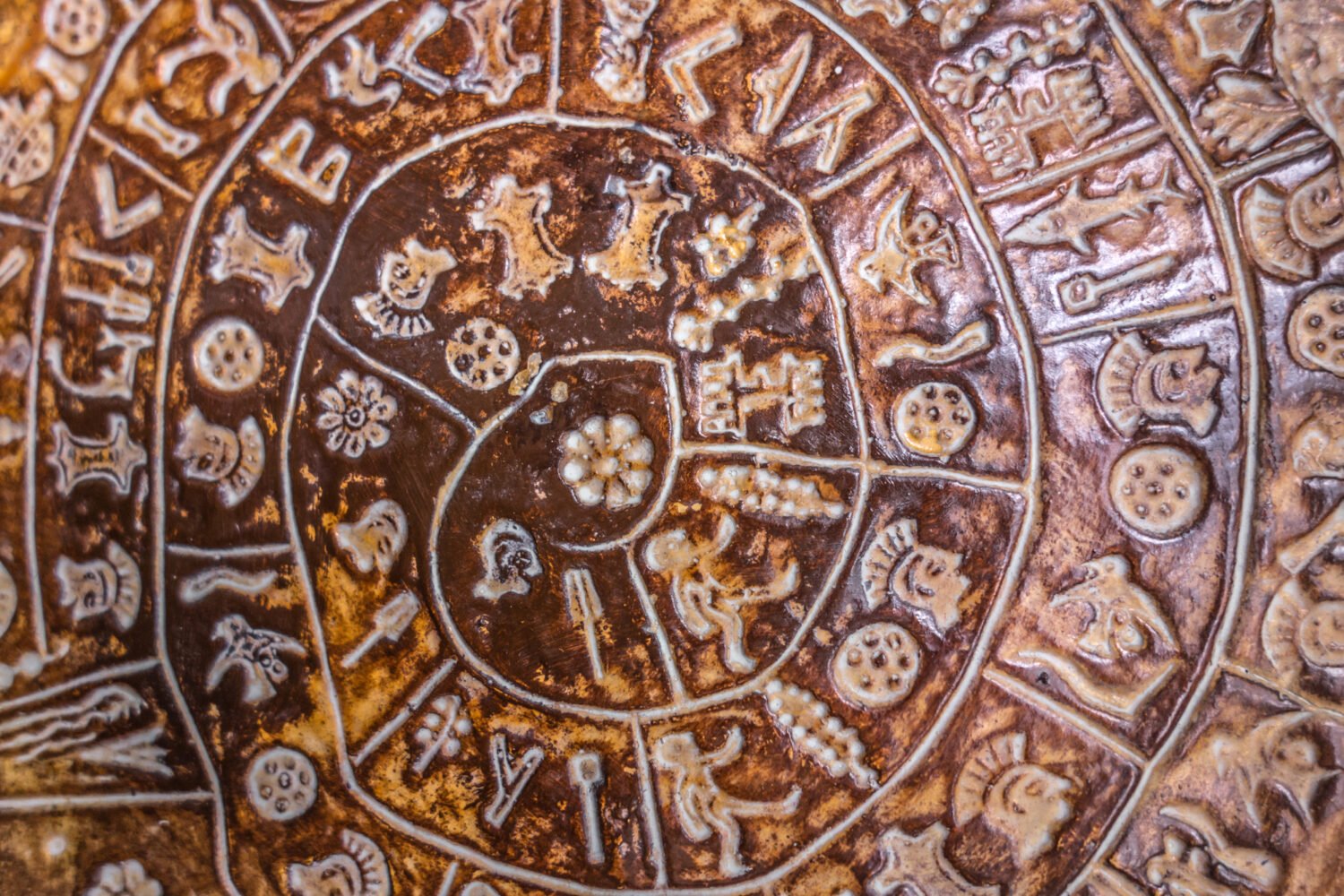With its intricate symbols and mysterious origins, the Minoan Phaistos Disc has long captivated historians, linguists, and enthusiasts of ancient civilisations. This artefact, discovered over a century ago, continues to be a subject of debate and fascination.
Historical Context: The Minoan Civilization
Before diving into the disc itself, it’s essential to understand the civilisation from which it originated. The Minoans, named after the legendary King Minos, were a Bronze Age civilisation that flourished on the island of Crete from around 3000 BCE to 1450 BCE. Known for their advanced architecture, art, and maritime dominance, the Minoans have left behind numerous artefacts, but none as enigmatic as the Phaistos Disc.
Phaistos Disc Discovery and Initial Reactions
Luigi Pernier unearthed the Phaistos Disc in 1908. The discovery sent shockwaves through the archaeological community. The disc’s unique design and spiral arrangement of symbols were unlike any other artefact from the Minoan era. Initial reactions ranged from awe to scepticism, with some even suggesting it might be a forgery. However, subsequent studies confirmed its authenticity. Now it is displayed in Heraklion, in the Archeological Museum.
A Closer Look at the Symbols
Upon closer inspection, the disc reveals a series of intricate symbols, some resembling objects or beings from the natural world, while others are more abstract. These symbols include:
- Human figures, possibly depicting warriors or priests
- Animals such as fish, birds, and insects
- Plants and flowers
- Abstract symbols that might represent tools, weapons, or religious icons
The arrangement of these symbols, especially their repetition and order, suggests a structured form of communication, possibly a script or language.
Theories and Interpretations
Over the years, the disc has been subjected to numerous interpretations:
- A Phonetic Script: Some linguists believe the disc represents an early form of written language, possibly a precursor to Linear A. However, deciphering it remains challenging without a “Rosetta Stone” to provide a translation.
- A Ritual Object: Given the Minoans’ religious practices, the disc might have been used in ceremonies or rituals, possibly as a hymnal or prayer disc.
- An Educational Tool: The repetitive symbols suggest they were used for teaching, perhaps to instruct priests or scribes.
- A Storyboard: Some believe the disc narrates a story, possibly a myth, legend, or historical event, each symbol representing a different chapter or element of the tale.
The Phaistos Disc in Modern Culture
The mystery of the Phaistos Disc has permeated modern culture. It has inspired novels, films, and even music. Its design has been used in jewellery, tattoos, and art, symbolising mystery, knowledge, and the ancient world.
Conclusion
The Phaistos Disc is a testament to the complexities and mysteries of ancient civilisations. Its undeciphered symbols challenge us to continue our quest for knowledge and understanding of the past. As technology and research methods advance, we can only hope that the secrets of the Phaistos Disc will be unveiled.
With its enigmatic symbols and uncertain origins, the Minoan Phaistos Disc serves as a poignant reminder of the complexities of ancient civilisations and the mysteries they’ve left behind. As we continue to study and explore, artefacts like the Phaistos Disc challenge us to rethink our understanding of history and the evolution of human communication.
Table of Contents
Views: 93
